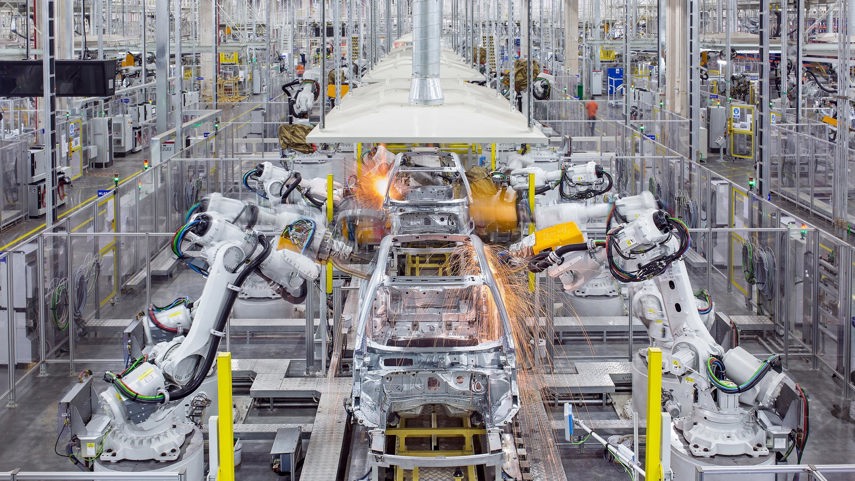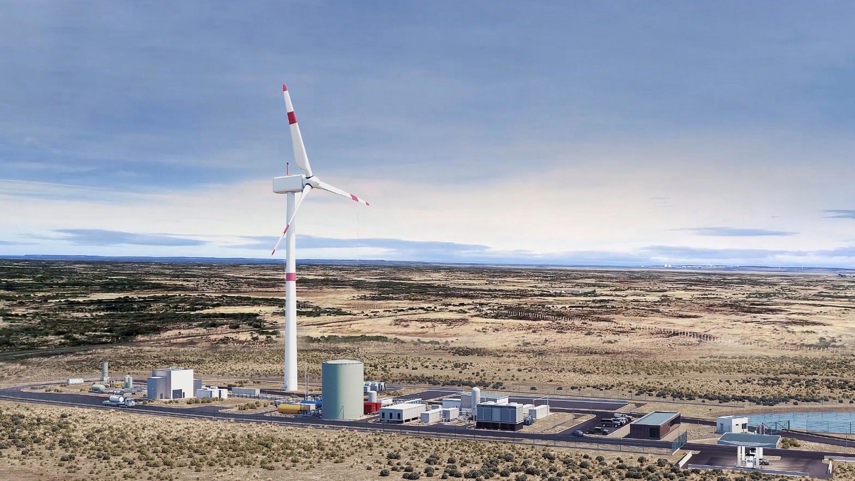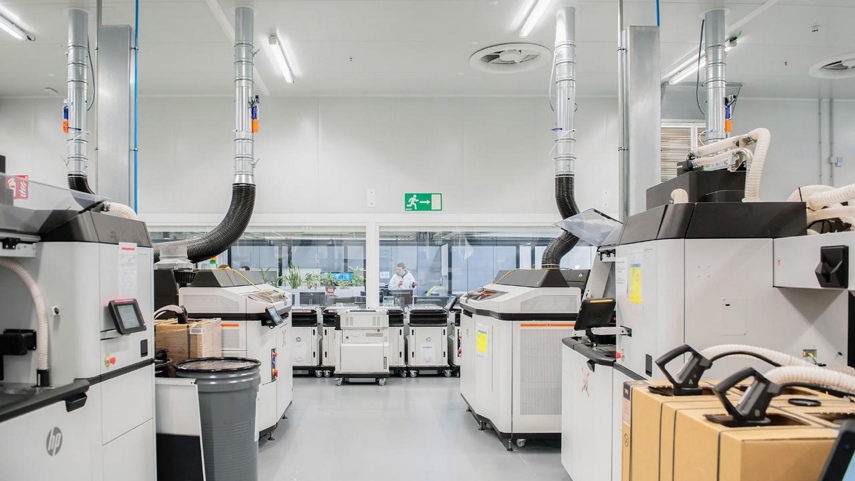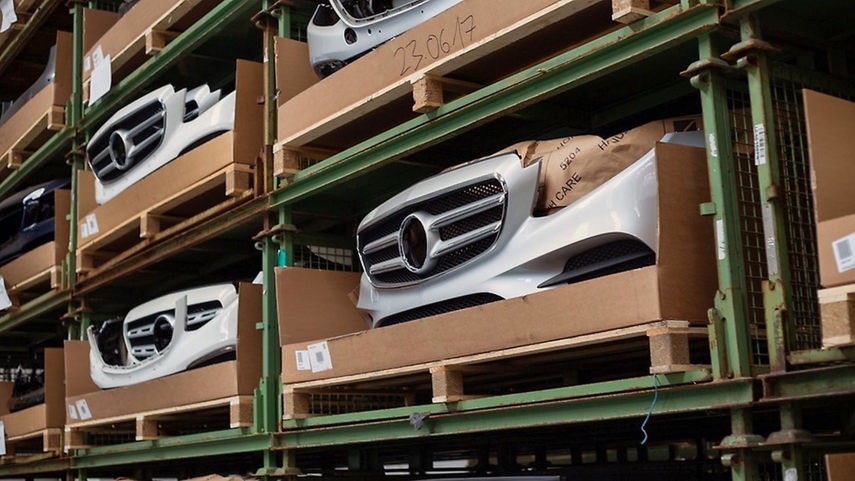Oddball efforts from automakers and suppliers to promote their green efforts cross our inboxes nearly every day, but one recently managed to catch our attention. It came from Volvo Cars Canada, and it was about a collaboration between the automaker and Canadian sustainable shoe company Casca. The Volvo Casca shoe uses recycled materials like repurposed car tires in the sole and recycled plastic bottles in the yarns for the upper. Like Volvo’s cars themselves, the limited-edition shoe is even quite stylish.
While the shoe was created to celebrate World Car Free Day (admittedly an unusual day for a carmaker to celebrate) on Sept. 22, it sent us down a path of discovering other interesting and creative ways that automakers are working to improve their sustainability to reduce the impact of their operations on the planet. Here are our five favourites.
Carbon-Free Steel Production

The first comes from Volvo, once again. The Swedish automaker has partnered with a steelmaker in the country to develop carbon-free steel. The steel itself still has carbon in it because you need that carbon to create steel from iron ore, but the process of making it will not. Burning coking coal to make steel makes up 7 per cent of global CO2 emissions, so Volvo and SSAB are working on getting rid of it. Instead of burning coal that was previously an essential part of the blast furnace needed to make steel, SSAB is working on using fossil-fuel-free electricity and water-sourced hydrogen. SSAB expects to make the first fossil-free steel and says it will have “virtually no carbon footprint.”
While the technology is still in development, SSAB hopes to have it ready for commercial scale in 2026, and Volvo Cars says it aims to be the first automaker to use it for production cars. Volvo Cars said that steel and iron production amounts to 35 per cent of CO2 emissions for making and producing a gas-powered car and 20 per cent in an electric vehicle (EV). Volvo Cars is working to reduce the lifecycle carbon footprint of its vehicles by 40 per cent between 2018 and 2025.
The automaker says its global car manufacturing plants are also powered by over 80 per cent climate-neutral electricity, and it has committed to making that 100 per cent by 2025, along with increasing the how much recycled and bio-based materials are used in its vehicles by 25 per cent by 2025.
Full Vehicle Recyclability

BMW revealed an entire concept car at the recent Munich auto show that demonstrated how the automaker will increase the amount of recycled content in its vehicles. BMW, like most automakers, is working to reduce vehicle emissions through electrification, but the materials that go into (and come out of) every vehicle are equally important. The i Vision Circular concept car was a look at what it would take to hit 100 per cent recycled materials (aside from bio-based) and 100 per cent recyclability in a vehicle.
While the concept used ideas including using far more “secondary materials,” using fewer and simpler fasteners, and making the entire interior out of just one material, what BMW is accomplishing with the new iX electric crossover is even more impressive. It uses 50 per cent secondary nickel in the battery and the housing is made of 30 per cent secondary aluminum, cutting CO2 emissions by “a factor of approximately four to six” for those materials. BMW says that using secondary materials is also the best way to reduce the mining and trading of conflict materials like cobalt and lithium.
The automaker is already using almost 30 per cent recycled and reusable materials and is working with suppliers to develop new ways to recycle automotive plastics that result in higher-quality new materials. BMW is also designing cars to be easier to dismantle and recycle, including making wiring harnesses easy to separate and reducing the number of plastics used.
Wind-Powered Fuel for Air-Cooled Cars

Porsche was early to the luxury high-performance EV market, but even as the brand electrifies its lineup, it knows that internal combustion is an important part of what its buyers want. So what’s the prestigious automaker to do? It has developed its own new fuel to help keep the hundreds of thousands of sports cars it has built already on the road.
“Electric mobility is an exciting and convincing technology but, taken on its own, it is taking us towards our sustainability targets at a slower pace than we would like,” said Porsche R&D boss Michael Steiner in 2020. “That’s why we are also committing to eFuels – and not ignoring possible applications in motorsports either.”
The automaker has done pioneering work on creating a synthetic fuel it calls eFuel. eFuel combines atmospheric CO2 and hydrogen using renewable energy to create a climate-neutral fuel it says is no different from standard gasoline except, of course, that it’s more sustainable.
Porsche is already involved in a pilot plant in Chile that is expected to produce 130,000 L of eFuels in 2022 and 550 million by 2026. The automaker says using the fuel can cut combustion engine CO2 emissions up to 90 per cent and Porsche will use the fuel in its Mobil 1 Supercup 911 GT3 cup cars starting next year.
3D-Printed Parts Recycling

Ford is no stranger to using alternative and more sustainable materials in vehicles. The Escape, for example, first used an entirely recycled fabric for its seats as far back as 2008. One of the automaker’s latest ventures helps add sustainability to a process that Ford had already raised the bar for regarding material waste.
3D printing, also called additive manufacturing, is a relatively new process that has had a massive impact on research and development work. Instead of expensive and resource-intensive conventional parts, a one-off part could be easily printed and tested. But while a 3D-printed prototype part was better than the old way of manufacturing and fabricating a whole lot of parts, on the scale of an entire automaker’s manufacturing process, it still led to significant waste.
Ford and printing company HP developed a method to turn 3D-print powders and parts into a raw material it could use for its vehicles. Ford is using recycled 3D-print powders and parts to make injection-moulded fuel line clips for F-250 trucks. The clips are lighter, have better performance, and cost 10 per cent less, in addition to keeping waste out of landfills. Ford and HP plan to source more of the 3D-printed parts from other sources including SmileDirectClub, which 3D-prints dental appliances.
Factory Scrapyard

Mercedes-Benz says that more than 95 per cent of a vehicle can be recovered at the end of that vehicle’s life. Reusing those previously enjoyed parts on a different vehicle is one of the best ways to reduce the environmental impact of the automobile, and that’s why Mercedes-Benz has its own vehicle-dismantling centre near Stuttgart. It’s called the Mercedes-Benz Used Parts Centre (UPC), and it has been dismantling Benzes since 1996.
More than 5,000 end-of-life vehicles are processed by the site every year, including prototypes and vehicles with production flaws. The site even handles Daimler’s commercial truck and bus fleet. The goal is to reuse and sell as many of the parts to consumers as is possible. It means lower parts prices on original-quality parts for consumers, and it requires far fewer resources than building new components to keep those vehicles on the road.
The European Union says that 95 per cent of a scrap car, by weight, must be recovered. The UPC says it can beat that figure. Resources like glass, aluminum, and copper are recovered for recycling. The site also captures any of the non-reusable components of the car, including brake fluid and coolant.

